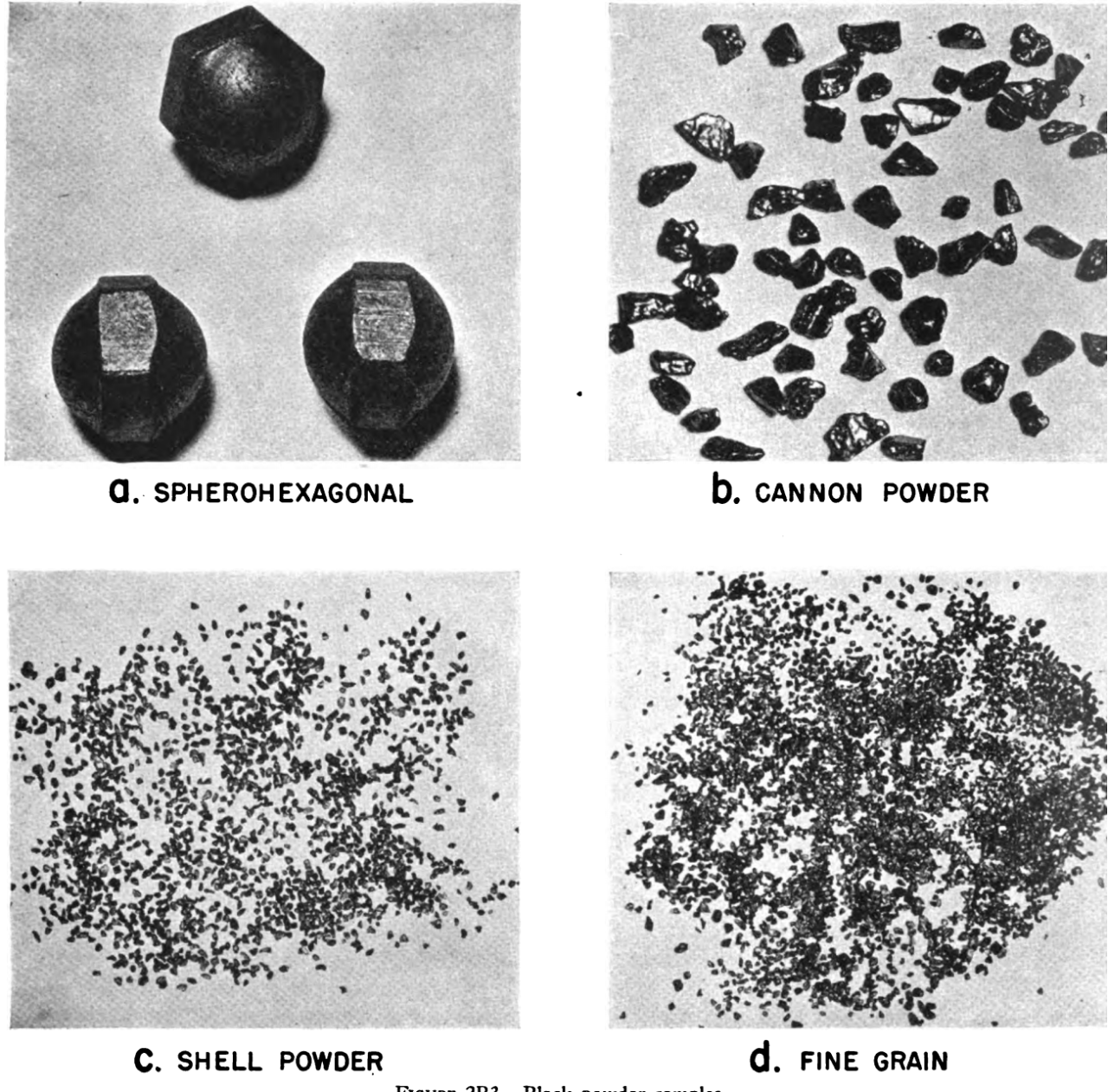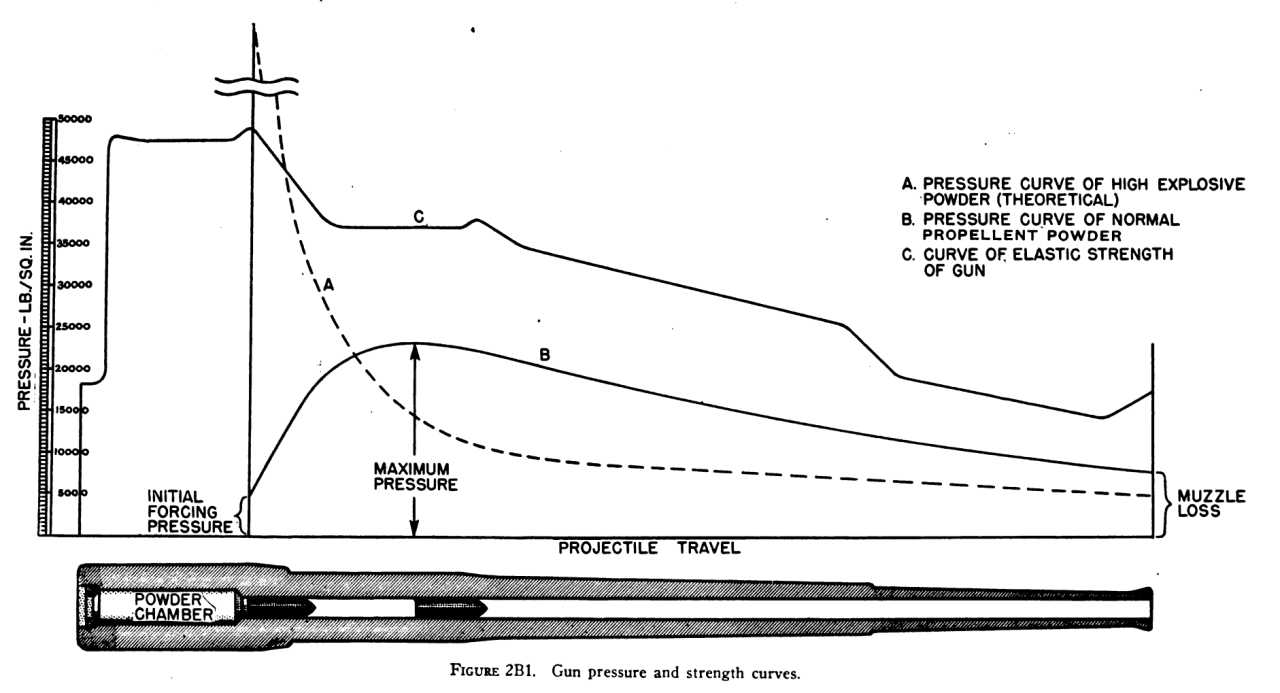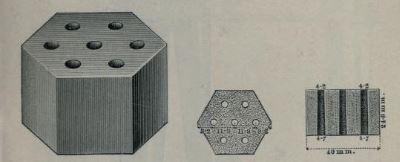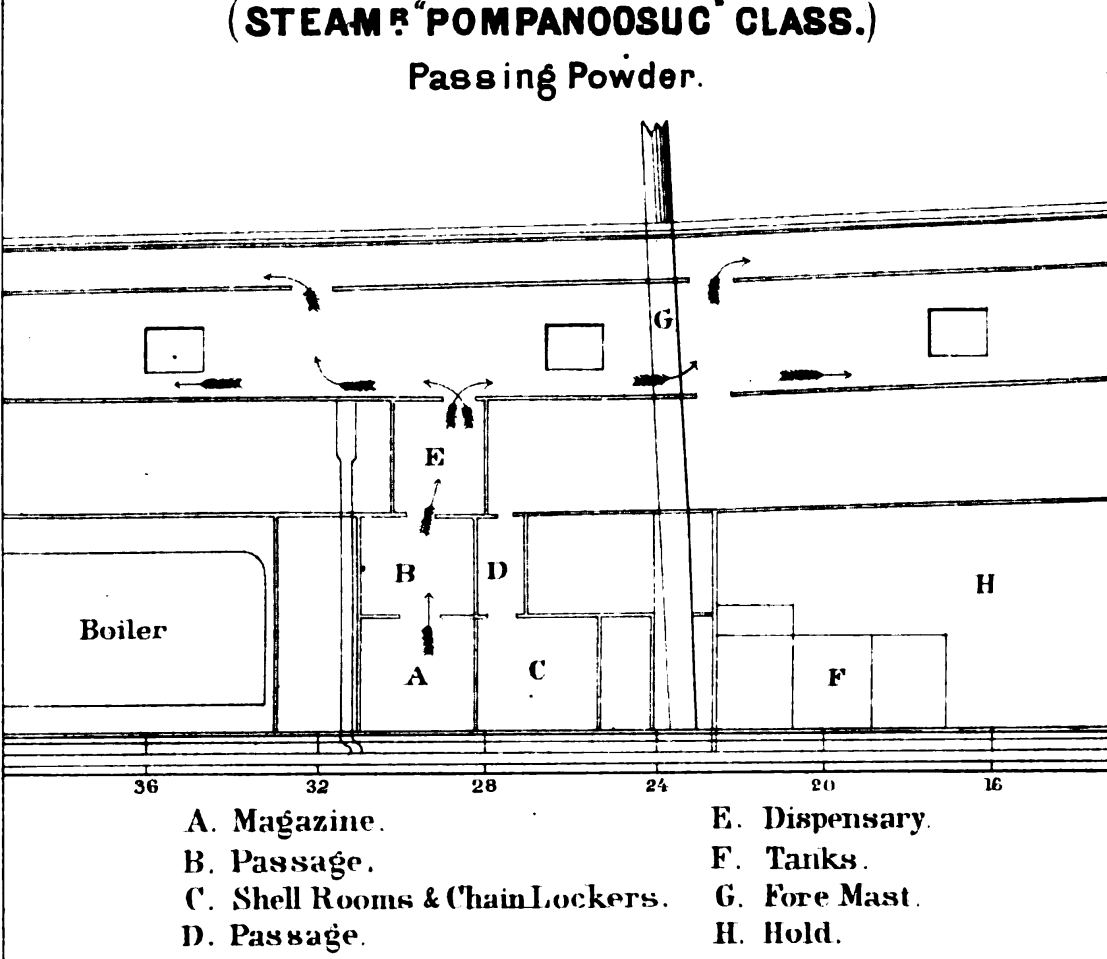Gunpowder first revolutionized warfare in the 13th century, with the invention of practical cannons. Over the centuries, improvements in powder went hand-in-hand with developments in gun design. But it wasn't until 1839, when French scientist Guillaume Piobert figured out how powder burned, that research could be placed on a truly scientific footing.

Different sizes of black powder grains
The ideal powder would instantly produce enough gas to reach the maximum pressure the gun could safely stand, and then moderate its burning rate to keep the pressure at the same level until the projectile reaches the muzzle. This is obviously impossible in practice, because as Piobert figured out the rate of gas production is proportional to the surface area that is currently ignited (in other words, powder burns only on the outside, and thus outside-in), and also rises with increasing pressure, although the relationship is more complicated and depends on the powder.
The physics of powder burning have a number of important implications. First, a finer powder will burn more quickly than a coarse powder, because there is more surface area for a given weight/volume.1 This in turn dictates what kind of powder gets used in each gun. A pistol needs a very fine powder, because anything not consumed before the bullet leaves the barrel is wasted. If you attempted to use pistol powder in a cannon, however, the powder would burn up well before the cannonball reached the muzzle. Most likely, the gun would burst as the internal pressure soared far beyond what it could stand. If the charge was reduced enough to keep this from happening, the pressure driving the ball would peak very early and then fall off rapidly, with a massive reduction in muzzle velocity.

Second, the maximum pressure will occur fairly early and then taper off. For any sort of non-perforated grain, the surface area (and thus rate of gas production) will fall continuously as the grain burns up. Increasing pressure will go some way to counteract this, but once the projectile starts moving, the increase in volume for the gas to fill will cause the pressure to drop. This effect depends on the shape of the grain, with compact grains (roughly spherical/cubical) having only one-quarter of their original surface area when they are halfway through their burn time (neglecting pressure). A long grain, like the British cordite, will fall off more slowly. Neglecting the ends (a small effect), cordite halfway through its burn has half the surface area it did originally. The best way to stabilize the burn rate even more is to mold the grain with a perforation. This allows it to burn not only from the outside, with a shrinking surface area, but also from the inside, where the surface area will grow. In fact, if we neglect the ends, a grain with a single perforation in the center (a long tube) will have the same surface area throughout its burn. Later naval powders, such as those used for Iowa's 16" guns, would have multiple perforations, which actually increase surface area as the powder burns. This is helpful in filling the space behind a fast-moving shell, increasing muzzle velocity at a relatively low cost. In these kind of powders, the effective determinant in burning rate is the thinnest portion that will be burned through when the gun is fired, a dimension known as web thickness. When the burning surfaces meet, the powder is divided into slivers, and the burning rate drops off. When a gun is fired with a reduced charge, it's common for the slivers to be blown out of the gun due to the lower burning rate at the charge's reduced pressure.

Prismatic powder
The American Rodman Gun was among the first to take advantage of this, replacing the normal granulated powder with a set of disks of compressed powder, each with multiple perforations. Results in tests varied, probably because the disks were more fragile than typical powder of the day, and any crack could cause a major change in gas production. As a result, this method never caught on, but the idea of using larger elements of compressed powder did, with the so-called pellet powders. However, in British service at least, these were swiftly replaced by pebble powder, which was not compressed to anywhere near the same degree, instead being the result of simply cutting up a cake of gunpowder, and glazing the resulting cubes.
But the advantages of internal holes could not be denied, and work began on so-called prismatic powder, molded in the shape of a prism and with an internal hole. A typical prismatic powder from the late 1870s was a hexagon measuring 40mm from corner to corner and 25mm high, with a 9mm channel down the middle. To make a charge, the prisms were usually lined up so that the channel was continuous to improve ignition. Because hexagonal prisms nest tightly, the outsides of the prisms were unlikely to ignite well, giving an approximation of the rising gas production of a multiple-perforation charge. This was an important factor in the British decision to adopt breech-loading guns around 1880, as the limits on the barrel length of muzzle loaders prevented them from taking full advantage of the new powder.

The powder supply path in an 1860s USN frigate
Improvements in powder shape were matched by work on powder composition. The traditional willow charcoal was replaced by partially-carbonized rye straw, and sulfur content was greatly reduced. This turned the powder brown, and it was known, unsurprisingly, as brown powder or coca powder.2 Brown powder burned more slowly than conventional black powder, which was good for use in longer barrels, and produced much less smoke. Powder smoke had always been a nuisance, but with QF Guns and machine guns entering service, it would have been a serious issue had not brown powder produced much less of it. The lower carbonization contributed to this, as did the reduced sulfur content, which also helped it light more slowly.
While brown powder was a significant advance over black powder, its service career was remarkably short. Within a decade of entering service, it was overtaken by developments in chemical explosives, which would relegate the gunpowder family to obsolescence, and give us the ancestors of the smokeless powder that remains in use today.3
1 If this doesn't make sense, consider two powders, one made of 1 mm cubes, the other of 2 mm cubes. A single grain of the 2 mm powder will weigh the same as 8 grains of the smaller powder, and has the same surface area as four grains. All else equal (and it's fairly reasonable to assume a constant burning rate) the bigger powder will take twice as long to burn up as the smaller powder. ⇑
2 Many sources conflate brown/coca powder and prismatic powder, because these two were introduced at about the same time. But early British prismatic powders were made with regular black powder instead of brown powder, and there's no particular reason the two have to be linked. ⇑

Comments
@bean, Your photos of Different sizes of black powder grains really doesn't show anything without a scale to show what the size is.
Although I guess we can assume all four photos are the same scale and so have a relative coarseness indication.
You can see a caption that's been cut off at the bottom indicating that @bean took it from a hard-copy publication, which presumably has the same issue (based on the structure of the figure number, probably the same one as the gun pressure example). If they didn't do it, @bean probably can't bring it back.
CatCube is right on this one. I pulled the image from Naval Ordnance and Gunnery, which didn't have a scale. Illustrating this post was a headache, so I took what I could get.
It's surprising how little attention most books give to powder, shells, and even guns, considering they determine almost everything about the rest of a ship's design.
These first two posts filled in a lot of blanks for me about naval design between Trafalgar and the Great White Fleet.
That's higher praise than I expected for this series, but I do appreciate it. I suspect that a lot of the problem is just one of references and nobody having tied it all together in a way that's relatively easy to reference. Maybe I've made a positive impact on that front.